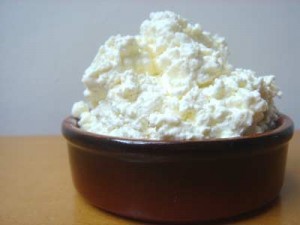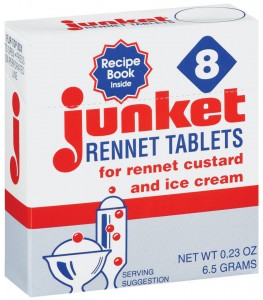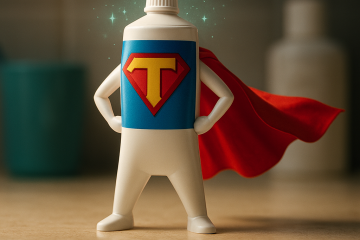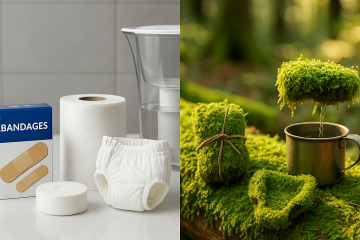 When it comes to making your own cheese from powdered milk, I decided to start off easy today and address cottage cheese making specifically.
When it comes to making your own cheese from powdered milk, I decided to start off easy today and address cottage cheese making specifically.
Perhaps you’re thinking that cottage cheese is simply a luxury that you’ll do without in a survival scenario. Ok. That’s fine if you’d prefer not to indulge in it. But I use it strategically in my home.
Cottage Cheese in Recipes
Using cottage cheese in dishes makes the dishes taste as if they are full of fat and thus very satisfying—without any of the “fat” side effects. I want my family to feel as if they are being fed abundance, not scarcity in any scenario. Not only that, but cottage cheese is really good for you. It’s packed with protein and calcium. I also find it easy to make. I’m all about conserving physical energy in a survival scenario. The making of cottage cheese doesn’t negate that rule. And the best part is, you’re homemade cottage cheese will be amazing! There simply is no comparison to what you make at home and what you buy in the stores—not even at the health food stores. I like to add it to casseroles and pasta sauces. In fact, I use cottage cheese as the base for my alfredo sauce and still get a heavenly, low fat version of fettuccine alfredo. (I hate writing these kinds of articles in the morning when such a dish would be frowned upon for breakfast.) In addition to putting it IN dishes, you can easily feature it AS a dish. You can really enjoy it with some simple additions such as caraway seeds, chives, dill, or fresh cilantro in it.
Ok. So just how easy is it to make? First and foremost you need to have a real powdered milk, not a milk alternative. You should also be aware that cottage cheese can be made from any kind of milk. Whether it is skim or whole milk, it doesn’t make any difference in the process.
You will also need rennet tablets (also known as Junket tablets) Be sure to have these in your pantry, folks. They are necessary for making cottage cheese. I have found them in every grocery store I’ve looked for them. So I don’t believe they are hard to find. You’ve just probably never noticed them before.
 You will also need buttermilk. Now before you freak out on me because you don’t regularly have buttermilk on hand, don’t worry. So long as you have powdered milk and vinegar, you’ve got buttermilk. (See previous powdered milk article)
You will also need buttermilk. Now before you freak out on me because you don’t regularly have buttermilk on hand, don’t worry. So long as you have powdered milk and vinegar, you’ve got buttermilk. (See previous powdered milk article)
For equipment you’ll need a large pot with a lid, a metal bowl that will fit over another pot that can act as a double boiler, cheesecloth and some string.
To make the cottage cheese, here’s all you need to do:
Dissolve the rennet tablet in a bit of warm water. (Just enough to dissolve it. The package directions on the rennet tablets can help you out if you need to be more exact.)
Pour 1 gallon of rehydrated powdered milk into a large heavy pot that has a lid and heat to 90 degrees Fahrenheit.
Add 1 pt. of buttermilk and stir it to mix in well with the milk. Then add the dissolved rennet mixture. Turn the heat off. Cover the pot and let it sit overnight in a warm place.
The next day you’ll see a gelatinous mass. It will look a bit like a very firm yogurt. This is essentially your curds. With a long, sharp knife, cut through the curd mixture in order to break it up into small pieces. (Yes, this will take a little bit of elbow grease)
Transfer this mixture to a large metal bowl that will fit over a pot of water. Bring the water up in temperature enough to bring your curd temperature to 110 degrees Fahrenheit. Shake the curds a bit during this process to help distribute the heat evenly.
When the curds have reached the 110 degrees, turn off the heat and leave the bowl on the pot for about 30 minutes.
Place a wide enough piece of layered cheese cloth over a bowl in the sink too that will catch all of your curds. Pour the warmed curds into the cheese cloth. Gather it together and tie the gathered part of the cloth with your string. (You can also use a cloth bag.) Hang up the curds to drain.
When your curds have drained, mash them with a fork. You can add a bit of milk to give you more moisture or you can stop draining them when almost all of the dripping has ceased. That’s it. Now you will have your very own cottage cheese.
This recipe makes about a pint and a half of cottage cheese.



7 Comments
Jackie · December 17, 2009 at 4:35 am
We love cottage cheese and have it often for an evening meal with pears.
I got some tablets a while back but have not tried it yet.
Can you use a strainer instead of cheese cloth?
Thanks
Jackie
Kellene · December 17, 2009 at 7:11 pm
Yes, so long as the strainer is really fine.
Sherry · December 18, 2009 at 10:49 pm
Kellene:
Where did you find the rennet in the store? By the dried milk? I have looked but, must have over looked it. Thanks SO much for your insite and articles, wish I was closer and could attend some of your classes.
Thanks,
Sherry
Kellene · December 19, 2009 at 1:45 am
By the canning supplies and parrafin wax.
Laurie · September 3, 2013 at 10:09 pm
Actually, here, IF you can
Actually, here, IF you can find it, it will be on the pudding aisle.
Thanks for all you do, Kellene!
Ronald Barnes · February 8, 2017 at 5:48 am
Check by the ice cream salt.
Check by the ice cream salt.
Bonnie · March 7, 2012 at 2:01 am
I’ve been making fresh cheese for about a year now. When I make fromage blanc (my favorite and old stand-by) I need to heat the milk to 86-90 degrees. You don’t have to do this on the stove. I put the milk in my stock pot in my kitchen sink and fill the sink with hot water. After, oh, 15 to 20 minutes the milk gets up to the right temp. I usually have to refresh the hot water once or twice.
Also, if you don’t have cheese cloth handy, you can use flour sack tea towels. It takes longer to drain, but it works.
I haven’t tried cottage cheese, yet. Got to give it a try soon,
Comments are closed.